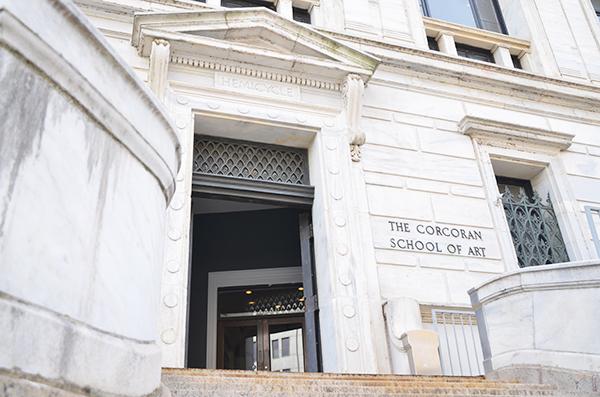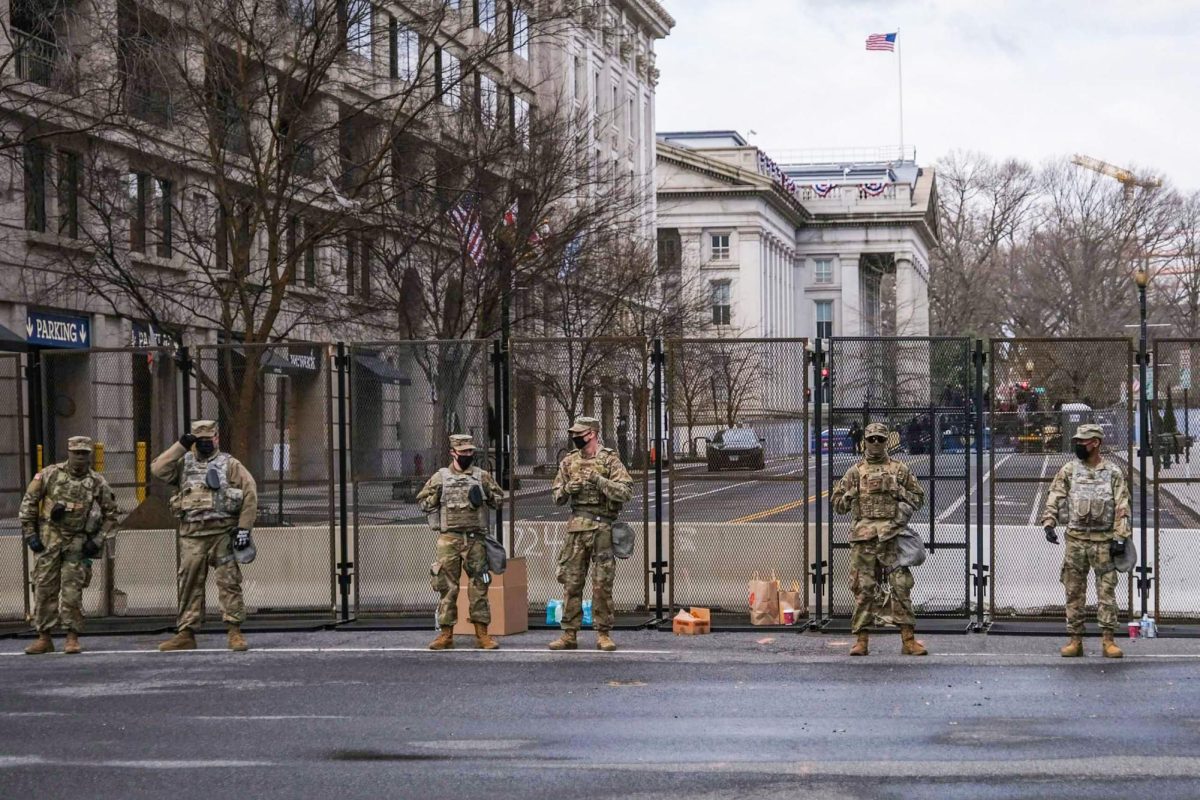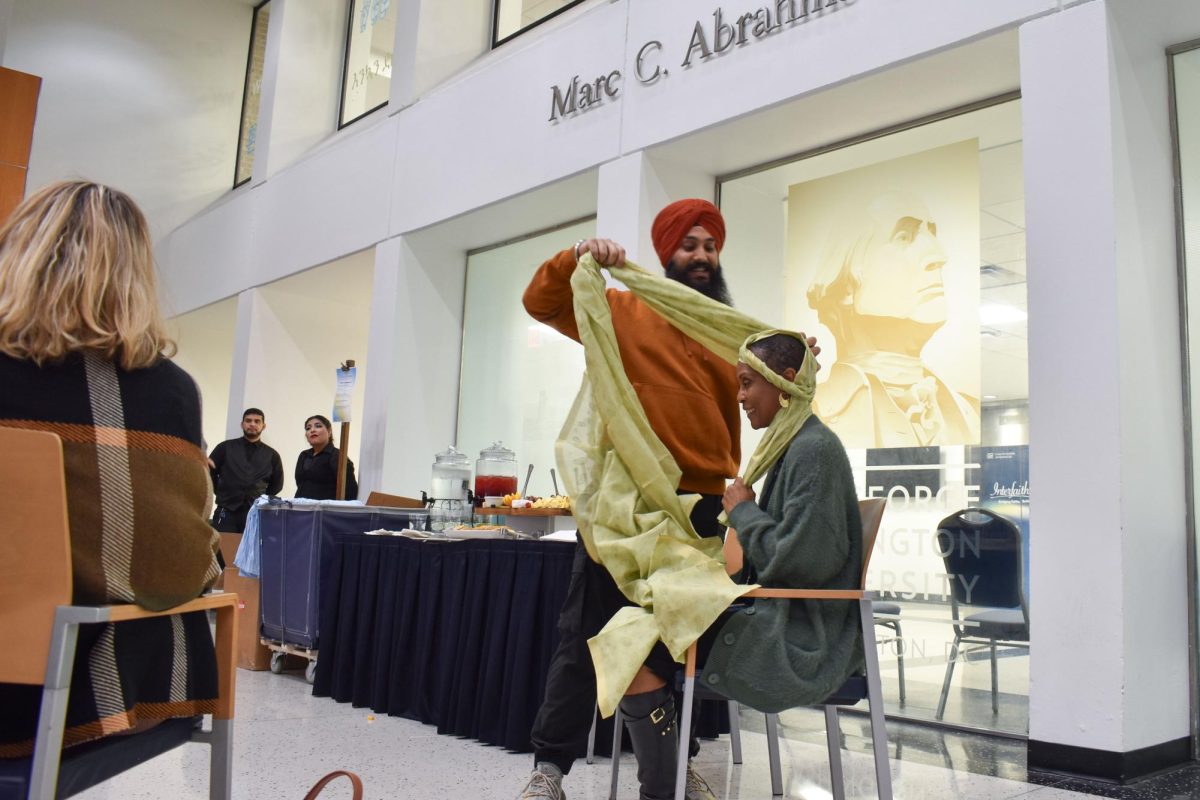Millionaire philanthropist Wayne Reynolds has never donated to the Corcoran, despite rallying behind the arts institution in court this summer and giving more than $100 million to other arts and education institutions since 2000 through his family foundation.
Reynolds, chairman and chief executive officer of the philanthropy organization Academy of Achievement, is more than a feisty witness who opposed the merger – he’s the type of deep-pocketed arts donor GW hopes to gain from its merger with the Corcoran.
Though he had several dinners and meetings with the Corcoran’s top leaders, he was never asked to donate, which Reynolds said was a sign the institution was poorly managing its fundraising arm. Many donors say all fundraisers have to do is ask.
“Going to the existing donor base doesn’t make sense because it doesn’t exist,” Reynolds said. “Why would an alumni at the Corcoran give money now that it’s been destroyed – it’s not the Corcoran now. It’s GW.”
Reynolds’ experience reflects the challenge that lies ahead for GW’s fundraising office: finding arts donors to give money to a school they never attended, when they can choose from dozens of other under-funded museums. And GW will need the Corcoran programs to pull their weight financially, as it relies on all of its schools to build a solid stream of donations to offset costs.
Officials in GW’s fundraising office have started planning ways to lure donors from the art world, and will send out a message to Corcoran alumni within the next month, said Vice President for Development and Alumni Relations Mike Morsberger. That’s the first step to connecting with the new pool of potential donors.
GW also has a list of former Corcoran donors, though they have not yet been contacted. The University also hired one employee from the Corcoran’s development office, Morsberger said.
“Corcoran programs now under the canopy of things GW does will continue to be supported,” Morsberger said. “We’ll continue to do everything we can to try and make them feel a part of it.”
One of the last major donations to the arts at GW was a $25 million gift in 2011 to create the GW Museum and Textile Museum, the University’s largest-ever gift at the time. In June, officials launched a University-wide campaign to raise $1 billion by 2018.
Getting donors on board
Administrators will have to create a pattern of donating in a community that rarely gave before the merger. The Corcoran, which was financially failing before the merger, struggled to pull in donations from fundraising – a concern as institutions nationwide rely on growing their financial foundations through fundraising instead of continuing to raise tuition.
[RLBox]
[RL articlelink=”https://www.gwhatchet.com/2014/02/20/with-questions-hanging-over-corcoran-merger-gw-focuses-on-opportunities-for-arts/”]
[RL articlelink=”https://www.gwhatchet.com/2014/02/23/at-rescued-corcoran-college-a-new-kind-of-uncertainty/”]
[RL articlelink=”https://www.gwhatchet.com/2014/06/12/columbian-college-of-arts-and-sciences-to-absorb-corcoran-school/”]
[/RLBox]
Revenue from fundraising events at the Corcoran has not reached $1 million in the last five years. The Corcoran overall reported net losses for fundraising from 2009 to 2012, according to financial documents filed in D.C. Superior Court this summer. Total fundraising in 2011 was about $3.2 million, the lowest amount in two decades, according to tax documents.
University spokeswoman Maralee Csellar declined to provide the Corcoran’s alumni donor rate, saying officials were still “sorting through the information we have provided.”
Terrance Shanahan, a member of the advocacy group Save the Corcoran, said he has donated to the Corcoran without being asked. He last gave $500 two years ago.
He and his wife are also members of both the Baltimore Museum of Art and the Museum of Modern Art in New York, which he said have proven to him that they are “interested in their members.”
“[The Corcoran] alienated a lot of people and they weren’t smart about asking [for gifts],” Shanahan said. “It’s easier to keep a customer than find one, and they never did any of that work.”
Richard Rogers, the president of the College for Creative Studies, said though the Detroit arts school has been “successful” in raising money from corporations and other nonprofits, it has struggled to attract alumni donations.
“A lot of our alumni don’t earn large incomes,” he said.
Rogers said GW may be able to get Corcoran donors who were discouraged from giving to the school before it joined a more financially stable institution.
“Donors would probably have been holding back saying, ‘I don’t want to put my money there, I don’t know if the institution will even survive and my money will go down the drain,’” Rogers said. “Now that it’s been absorbed into a much stronger institution with a lot of fundraising capacity within it, it might be a strong advantage.”
Paul Johnson, who specializes in art museum fundraising at the consulting firm Alexander Haas, said GW may struggle to convince Corcoran connections to make gifts to the University because “GW has zero track record in having an art school.”
“They give to art schools because they believe in artists,” Johnson said.
He said other universities with arts programs that are already well-known have an easier time landing gifts from arts philanthropists. Thirteen students graduated with fine arts degrees from GW’s existing arts department last year.
Johnson said the University will have to convince Corcoran donors they have a “very ambitious and visionary plan” for the arts program to encourage them to donate.

Using history as an example
Pushing Corcoran donors to give to GW will mean striking a delicate balance – showing Corcoran alumni that even though their school doesn’t stand alone anymore, a donation to the Corcoran will still support the art programs they valued.
As GW works to make ties with Corcoran donors, and show how they’re stitching the arts school into the fabric of the University, they can look back on GW’s 1999 merger with the Mount Vernon College as an example.
Morsberger said there are “striking parallels” between the two mergers.
“We could have turned it into a parking lot,” he said. “But we worked to keep the spirit of Mount Vernon alive. I think the same thing applies with the Corcoran.”
It’s been more than six decades since Joanne Holbrook Patton attended day school on what is now the Mount Vernon Campus, but even without an official GW degree, she’s still engaged with the University her alma mater now falls under – hosting events on her estate and making annual donations.
Holbrook Patton, who is the daughter-in-law of World War II hero Gen. George S. Patton, graduated from Mount Vernon Seminary in 1948. She now owns a 27-acre organic farm in Hamilton, Mass. – a location for several freshmen send-off events over the years – which was passed down through her late husband’s family.
Though Holbrook Patton has not yet gotten a “strong ask” for a donation to the University’s $1 billion campaign, she said she will soon meet with the development office and plans to make a contribution. Holbrook Patton has a history of philanthropy in her family – the Patton family gave its estate to the town of Hamilton for historic preservation.
“I’ll see what I can do,” Holbrook Patton said. “I cannot say enough about the genuine interest in Mount Vernon that GW’s shown, without denying the past but honoring Mount Vernon roots.”
Alissa Varghese and Henry Klapper contributed reporting.







